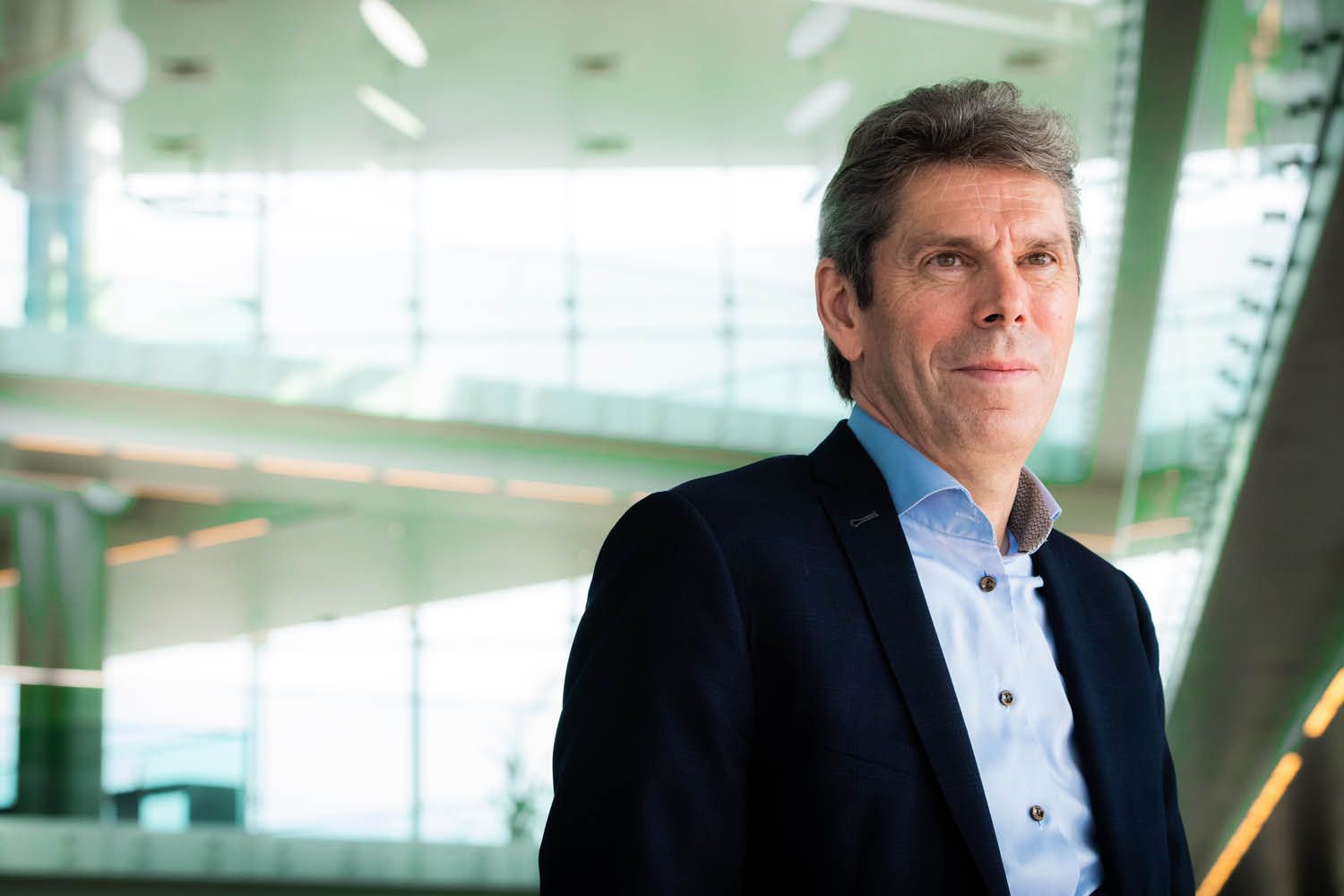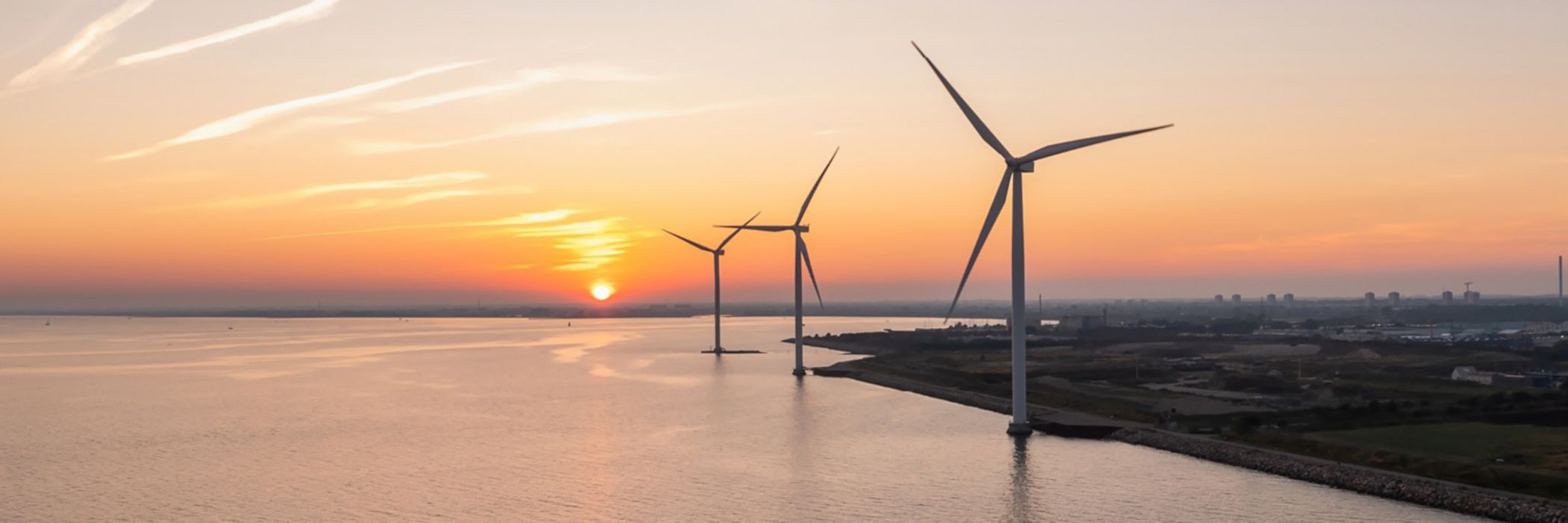Getting the energy distribution grid ready for a world full of electric cars, solar panels and heat pumps; Frank Vanbrabant, CEO of Fluvius, wants to complete that mission in the early thirties of this century. But for him, being a DSO (Distribution System Operator) today, in 2030, is about more than a strong distribution system. „The importance of data management can hardly be underestimated,“ he says.
In recent years, huge investments have been made in basic infrastructure that enables us to respond to society‘s evolution towards electrification. In a world full of electric vehicles, solar panels and heat pumps, getting more power to people, in addition to capturing more power, has proved crucial.
At the start of the twenties, our electricity grid was not ready for the big electrification. To avoid congestion and breakdowns preventing the increasing amounts of electricity from reaching households and businesses, Fluvius rolled out a €4 billion energy transition investment plan, spread over ten years. Today, in 2030, the end of that investment period is in sight, and we are approaching our targets: reinforce 36,000 kilometers of power lines and provide 750,000 homes and commercial buildings with a heavier connection.

Frank Vanbrabant
CEO Fluvius
Avoiding net congestion
The investment plan was one that you could challenge at the outset with the opportunities that flexibility could possibly offer. Flexibility means, for example, a consumer is willing to switch off his freezer or boiler in exchange for a fee. That market already existed at medium voltage and later at low voltage, but at the time it was impossible to foresee what prices we would pay today, in 2030, for, say, switching off your solar panels. If the market were 100 percent flexible, there would have been no need for investment. We believed that the investment of 4 billion was necessary. Thanks to this plan, we now avoid grid congestion all over Flanders.
We made a street-by-street inventory of the places where we were going to open up all the pavements and reinforce the cables by 2032. Of the low-voltage grid to which households and small businesses are connected, at least 40 percent must be reinforced by 2032. Of the medium-voltage network, to which larger companies and part of industry are connected, 13 percent must be reinforced, and adjustments are required at one-third of the Flemish distribution cabins. Does this mean that today in 2030 all problems have been dealt with? Right now, 80 percent of the plan has been rolled out, so there are places where problems remain, for example when people drive electric or install solar panels. We have responded to that by creating the option of proactively requesting an attenuation.
Data as a driver
Next to the infrastructure, we notice more than ever how fast the data layer has grown today. Data have become the driver of the energy market. Everyone has a digital meter and that makes it possible to functionally use data from every customer. We no longer find dynamic tariffs that change every hour strange. We eventually got used to the capacity tariff, so people are now more energy conscious.
What‘s more, the energy customer has become central to the new ecosystem. Where he was previously the end point of the chain, he is now the epicenter of a much more crowded ecosystem. In that system, where we see support firms helping customers to actively participate, we market and share surpluses or become part of an energy community. That‘s a fundamentally different interpretation of the energy landscape from where we started in the twenties.
For Fluvius, as a DSO, the basic role of the time remained intact: everything depends on a strong distribution system. On top of that, we saw our role as data manager grow. Providing all parties with the data needed to do business required major investments in the systems to develop data management via software. It was building brick by brick and it is a role that cannot be underestimated. It involves much more than acting as a mailbox of meter readings. This is about sharing volumes of data in the millions per day.
Persistence
The breakthrough of the energy communities was very illustrative in that context. It was crucial for its evolution that, as a DSO, we could collect all production and consumption data on one platform. That made it possible to share energy and afterwards assemble everything correctly on the energy bill. The energy crisis we experienced during the early twenties was not insignificant in that respect. The biggest challenge we knew, and still know today as a DSO, was creating support. Whether it was the digital meter or the capacity tariff, it invariably required a lot of effort to overcome resistance. Even for our role as data manager, we had to fight and that applies equally to the investment plan. Nor do I expect that challenge to disappear with future evolutions, but I have always believed that the tipping point would come. The active energy consumer is here today, whereas ten years ago that same consumer would be happy if the lights were on. By persevering, and with the energy crisis back then being a game changer, things are different now. In 2030, we see the benefits of the persistence of 2022.
The active energy consumer is here today, whereas ten years ago that same consumer would be happy if the lights were on. By persevering, and with the energy crisis back then being a game-changer, things are different now. In 2030, we see the benefits of the persistence of 2022.

About the interviewee
Frank Vanbrabant is the CEO of Flemish distribution system operator Fluvius, which was established on 1 July 2018 from the merger between Eandis and Infrax and is the DSO for electricity and natural gas. It works independently from energy producers and suppliers. It does not produce or sell energy, but ensures electricity and natural gas reaches customers under the best possible conditions. Before becoming the CEO of Fluvius, Vanbrabant was the CEO of Infrax until 2014. Between 2007 and 2014 he was director customer services, purchasing and operations at Infrax.




